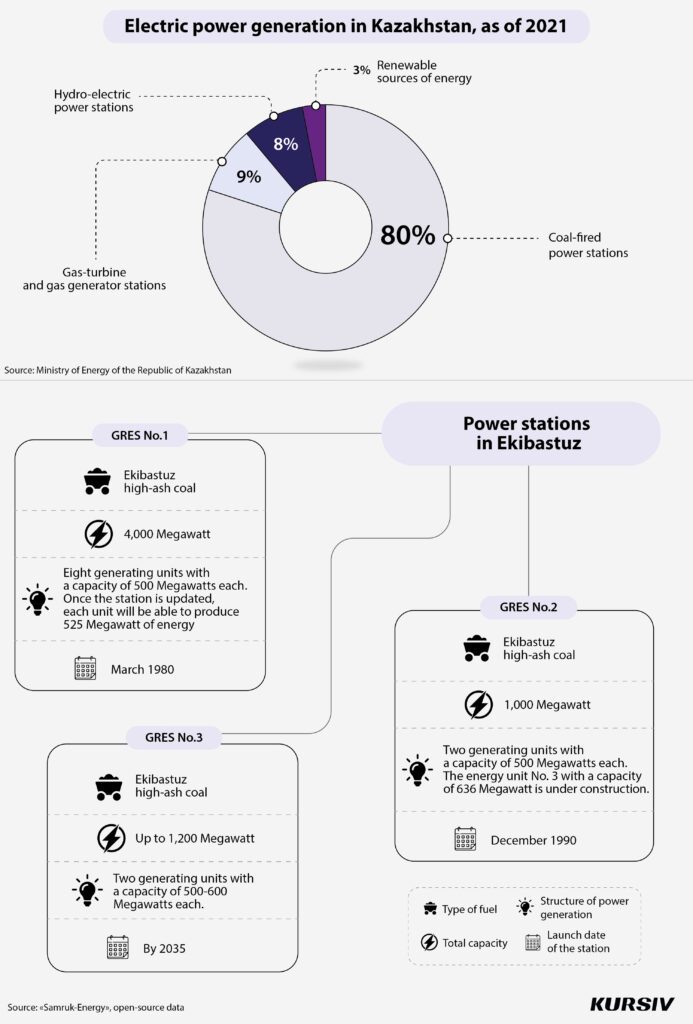Kazakhstan pursues green energy through coal power plants

Right before the launch of a new strategy designed to transform Kazakhstan’s economy to its low-carbon version by 2060, the government is considering the idea of constructing a new coal-fired power station in Ekibastuz.
The project of Ekibastuz Regional Power Station (GRES) No.3 was announced by Almasadam Satkaliyev, head of the National Welfare Fund Samruk-Kazyna during the cabinet session on the development of the electric power industry. The fund is the only shareholder of Samruk-Energy, the largest electric power company in Kazakhstan and producer of 35% of all electricity in the country.
Samruk-Energy already runs two big coal-fired power stations in Ekibastuz: GRES No.1 and GRES No.2. Now, Samruk-Kazyna is considering the construction of a new station with a 1,200-Megawatt capacity.
Even though this additional power might be produced by the current power station No.2, the fund wants to build another one. The current stations have a maximal capacity of 4,000 Mwatts each thanks to almost ready-to-use infrastructure specially designed for that capacity.

Over the next 12 years, Kazakhstan is going to virtually double its power generation capabilities by 17 Gigawatt. According to Satkaliyev, about 11 Gigawatts (65%) must be produced by Samruk-Energy.
At the same time, the country has already promised to get to carbon neutrality by 2060 and must present its new strategy for such a transit. However, like many other countries, Kazakhstan needs to boost its traditional electric industry with new power generating stations first and only then will the country be able to introduce green energy.
Given this factor, Kazakhstan is bound to rely on coal because the renewable energy sector is just in a nascent condition and needs both constant public support and traditional sources of energy as a reserve. Kazakhstan has no extra volume of natural gas and can barely fulfill the domestic gas market needs. Moreover, the government is forced to spend a part of its gas export revenues to subsidize the gas prices for domestic consumers. Although Kazakhstan has announced its intention to build a nuclear power plant by 2035, there is no information about its possible capacity and location.
In this situation, vast coal reserves in Ekibastuz and relatively simple coal-firing power stations might be considered the most reliable option for increasing power generation in the county, at least in the short-term. However, these stations aren’t eco-friendly and Kazakhstan has to figure out how to supply its economy with electricity and cut the carbon footprint of the sector.
«This is a global dilemma. In order to find a solution to this dilemma we need to find a balance first. This balance must be realistic and effective. We can’t afford unsystematic work or pipe dreams,» said Prime Minister Alikhan Smailov at the cabinet session.

